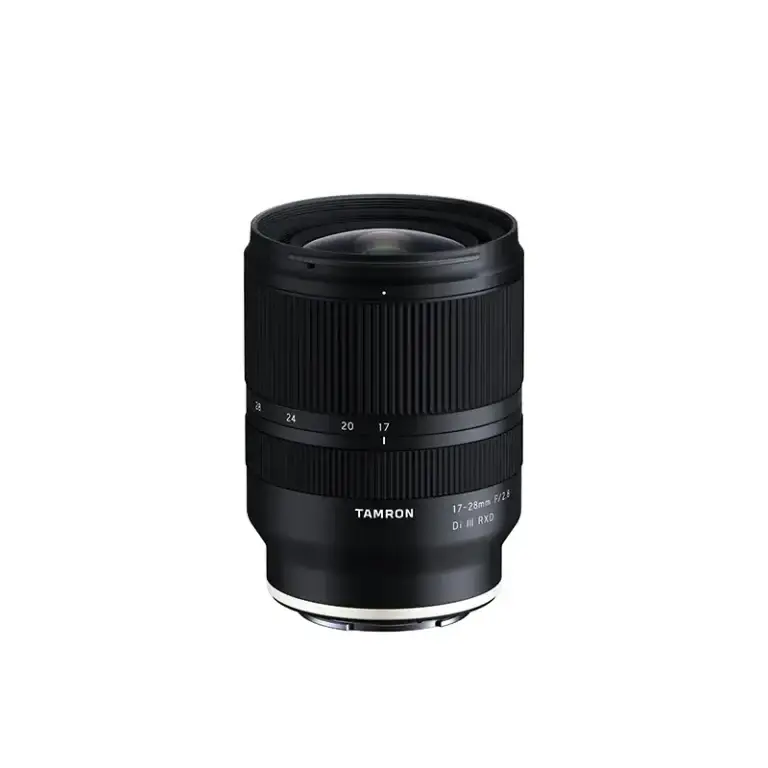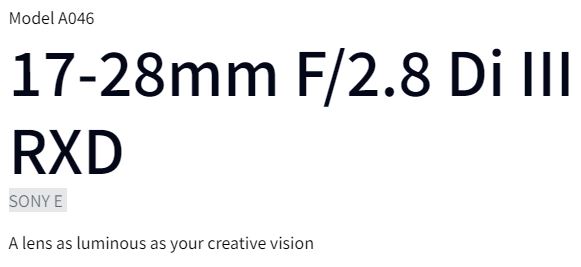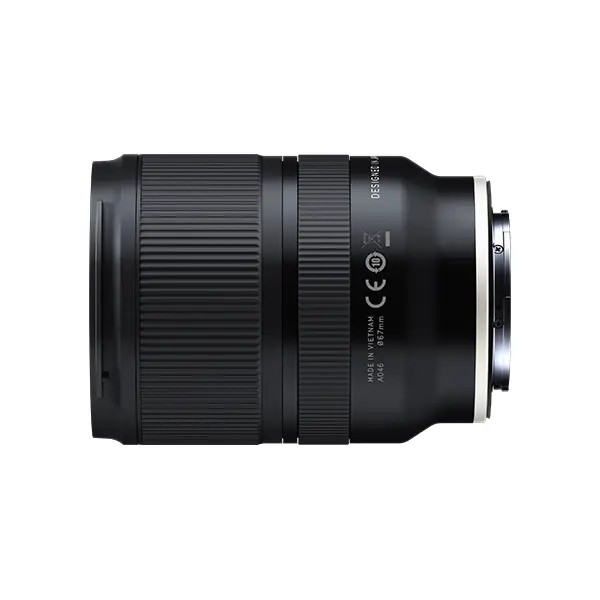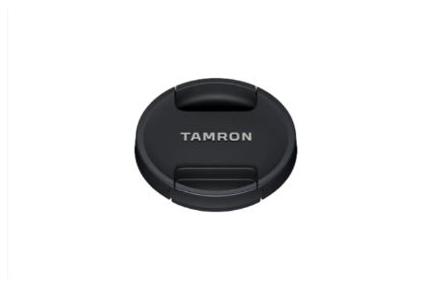

Specifications
| รหัส | A046 |
| ทางยาวโฟกัส | 17-28mm |
| รูรับแสงกว้างสุด | F/2.8 |
| มุมรับภาพ (ตามแนวทแยง) | 103°41′-75°23′ (กล้องแบบ Full Frame) |
| โครงสร้างเลนส์ | 13 ชิ้น แบ่งเป็น 11 กลุ่ม |
| ระยะโฟกัสใกล้สุด | 0.19 เมตร (7.5 นิ้ว) / ที่ช่วงซูม 17mm 0.26 เมตร (10.2 นิ้ว) / ที่ช่วงซูม 28mm |
| กำลังขยายสูงสุด | 1 : 5.2 เท่า / ที่ช่วงซูม 17mm 1 : 6 เท่า / ที่ช่วงซูม 28mm |
| ขนาดฟิลเตอร์ | Φ67 มม |
| เส้นผ่านศูนย์กลาง | Φ73 มม. |
| ความยาว | 99 มม. (3.9 นิ้ว) |
| น้ำหนัก | 420 กรัม (14.8 ออนซ์) |
| จำนวนม่านรูรับแสง | 9 (ม่านรูรับแสงแบบขอบโค้ง) |
| รูรับแสงแคบสุด | F/22 |
| อุปกรณ์เสริมพื้นฐาน | ฮูดบังแสงทรงกลีบดอกไม้ , ฝาปิดหน้าเลนส์ , ฝาปิดท้ายเลนส์ |
| รองรับระบบเมาต์ | SONY E-Mount |
MTF
MTF Chart Guide
MTF (Modulation Transfer Function) curves describe to what extent the tested lens can faithfully reproduce contrast of the subject in images it captures.
The closer the 10 lp/mm (line pairs per millimeter) curve (the thick line for low frequency) in an MTF chart to “1” of the vertical axis (the higher up), the higher the contrast reproduction performance of the tested lens will be. The closer the 30 lp/mm curve (the thin line for high frequency) to “1” (the higher up), the higher the resolving power and thus the subjective sharpness of the lens will be.
Lens performance differs depending upon directions. Solid lines show performance in the sagittal (radial) direction while dotted lines indicate performance in the meridional (circumferential) direction. When sharp lenses capable of delivering uniform optical performance over the entire image field are tested, MTF charts show curves plotted in good balance.
Performance characteristics of photographic lenses cannot be expressed with only MTF charts. There are other factors that are expressed in different methods, such as taste of softness and degrees of compensation of various aberrations. But you can use MTF charts as a scale to measure lens performance.










